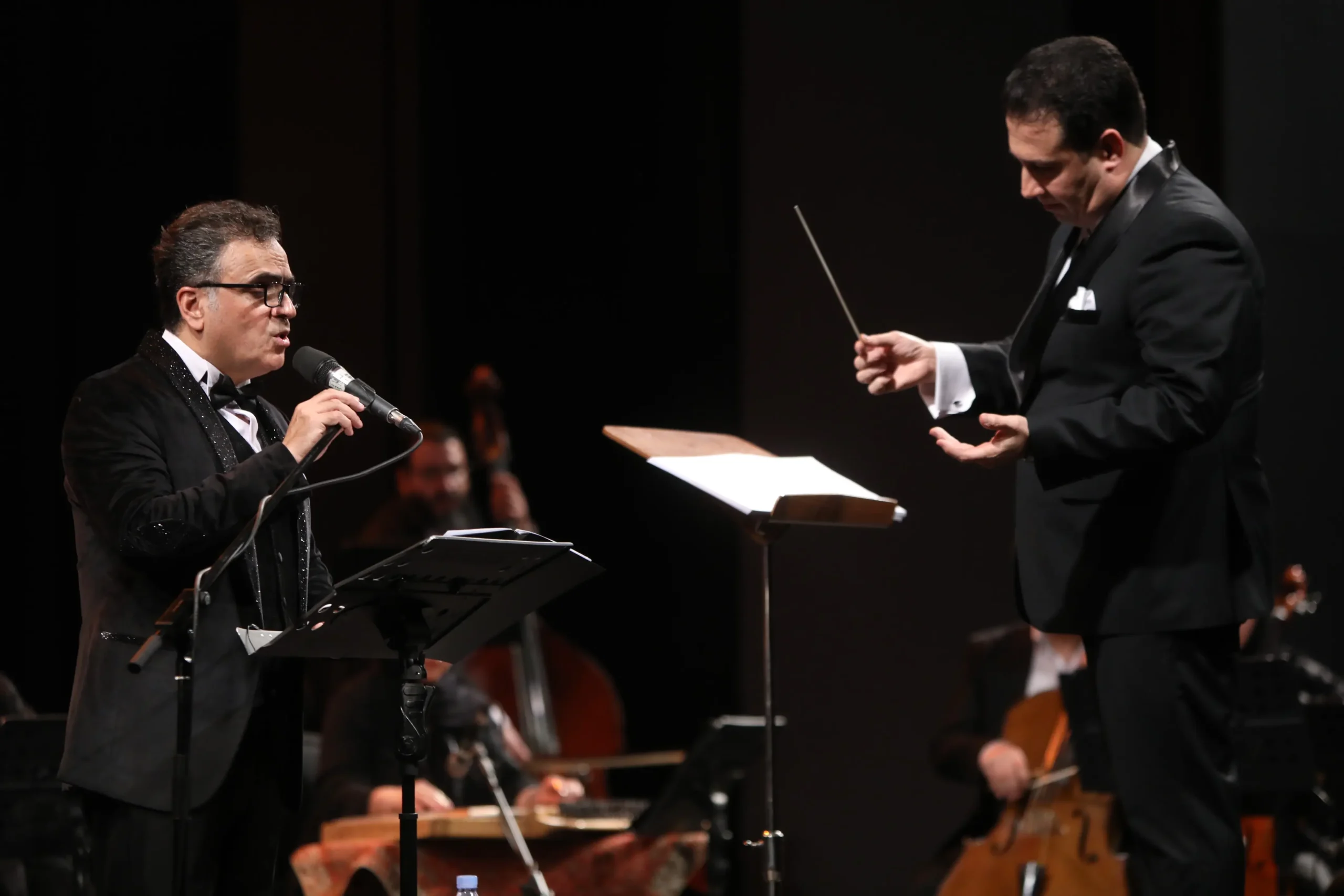
In a controversial turn at the 40th Fajr Music Festival, the Chakavak Orchestra—despite its amateurish performance and simplistic arrangements—was granted the festival’s prime 9:30 PM slot at Vahdat Hall, while the Tehran Symphony Orchestra’s polished rendition of Tchaikovsky’s Fifth Symphony was relegated to an earlier, less visible time, raising questions about the festival’s artistic priorities and venue management.
On the fourth day of the 40th Fajr Music Festival, the Chakavak Orchestra, conducted by Reza Shaeesteh, took the stage at 9:30 PM. In this performance, 13 pieces from old works that have been part of the collective memory of the people over the past decades were presented. Four singers alternated on stage, performing these pieces. The performance was well-received by the audience.
Shaeesteh had previously mentioned that some of the pieces performed in this concert had received permission for the first time since the revolution. This, along with the nostalgic and joyful nature of these works, made the audience find it engaging and uplifting, regardless of the quality of the performance.
The orchestration of this performance included strings, piano, flute, clarinet, qanun, tar, bass guitar, drums, and percussion.
In terms of quality, the arrangements were so simple that they could be considered at the level of a music school orchestra or a student ensemble. Naturally, this posed no significant challenge for musicians with professional experience in various orchestras and classical pieces. However, in some sections, particularly during the drum solo parts, rhythmic inconsistencies were noticeable.
The four singers in this performance appeared at a very average level, each showing issues with their vocal execution. Problems like singing out of tune, lack of proper breath control, weakness in voice control, disregard for dynamics, and singing in a monotonous manner were among the issues observed in their performance. Overall, the quality of their performance did not differ much from what we might hear in informal settings, such as at friendly or family gatherings, and in some cases, non-professional performances in such settings might have seemed better.
Rhythmic problems were also the Achilles’ heel for all four singers. Significant errors, such as starting musical phrases too early and being out of sync with the orchestra, were clearly evident. At one point, one of the singers began a measure earlier than the correct entry time, an error that could have become a disaster in the flow of the performance. Fortunately, after a few measures, the situation was controlled, and the performance resumed its course.
Reza Shaeesteh’s conducting was at a beginner level. Rather than being viewed as a conductor, he could be described as someone passionate and devoted to music, whose love and commitment to music and culture are commendable. However, from his hand movements and rhythm demonstrations, it was clear that he was still at a novice level. Given the simplicity of the arrangements and the nature of the pieces, this performance could have proceeded without a conductor, simply starting with a cue from the drummer.
The audience at Vahdat Hall expressed their joy in various ways, which is undoubtedly a positive and noteworthy aspect. In times when many are grappling with various challenges, joy and happy moments hold special significance. However, a question arises: Was Vahdat Hall an appropriate venue for this concert?
Performing pieces that have been ingrained in the collective memory of a generation for decades is a pleasant event, and the joy of the audience is indeed valuable. But if we look back, when these pieces were commonly heard in streets, markets, and teahouses, Vahdat Hall—formerly the Tehran Opera House—was a venue for grand works. At that time, prominent Iranian and foreign musicians and soloists performed classical pieces and major operas at this hall. The question arises: Does repurposing this space for performances like these align with its original mission? Does this trend reflect the thoughts of great figures like Hossein Sharshar, Monir Vakili, and first-generation founders of Tehran Opera, such as Baghcheban? More importantly, after 40 years, do the decisions being made reflect a path of growth for the country’s culture and art, or do they indicate a downward trend and a drift from the original objectives?
Shouldn’t venues be selected and evaluated based on the type of program? Perhaps for this concert, a cultural center or a larger hall than Vahdat Hall would have been more appropriate, especially given the widespread attendance. The question remains: Should Vahdat Hall, with its distinguished history, continue to host such performances, or would other venues, better suited in terms of capacity and the nature of the performance, be better options?
This situation occurred while, in the previous slot, the Tehran Symphonic Orchestra, conducted by Master Nasir Heydarian, took the stage at 6:30 PM and performed Tchaikovsky’s Symphony No. 5—a performance that was also well-received. The Tehran Symphonic Orchestra, supported by public funds, continually strives to elevate the level of music and culture in the country and is recognized as a symbol of Iran’s scientific and artistic music. However, in this festival, the Symphonic Orchestra performed in the 6:30 PM slot, while the Chakavak Orchestra, with a different nature, performed in the main and more popular 9:30 PM slot. This difference in scheduling raises questions about how slots are allocated in the festival. The question arises: Do managerial decisions align with the cultural and artistic enhancement goals of the country? Are the times and venues for these concerts chosen based on artistic and cultural criteria, or are they more about audience considerations and attracting larger crowds? These points can provide a deeper insight into the management of the festival and the decisions associated with it.
Written By Farid Parish
